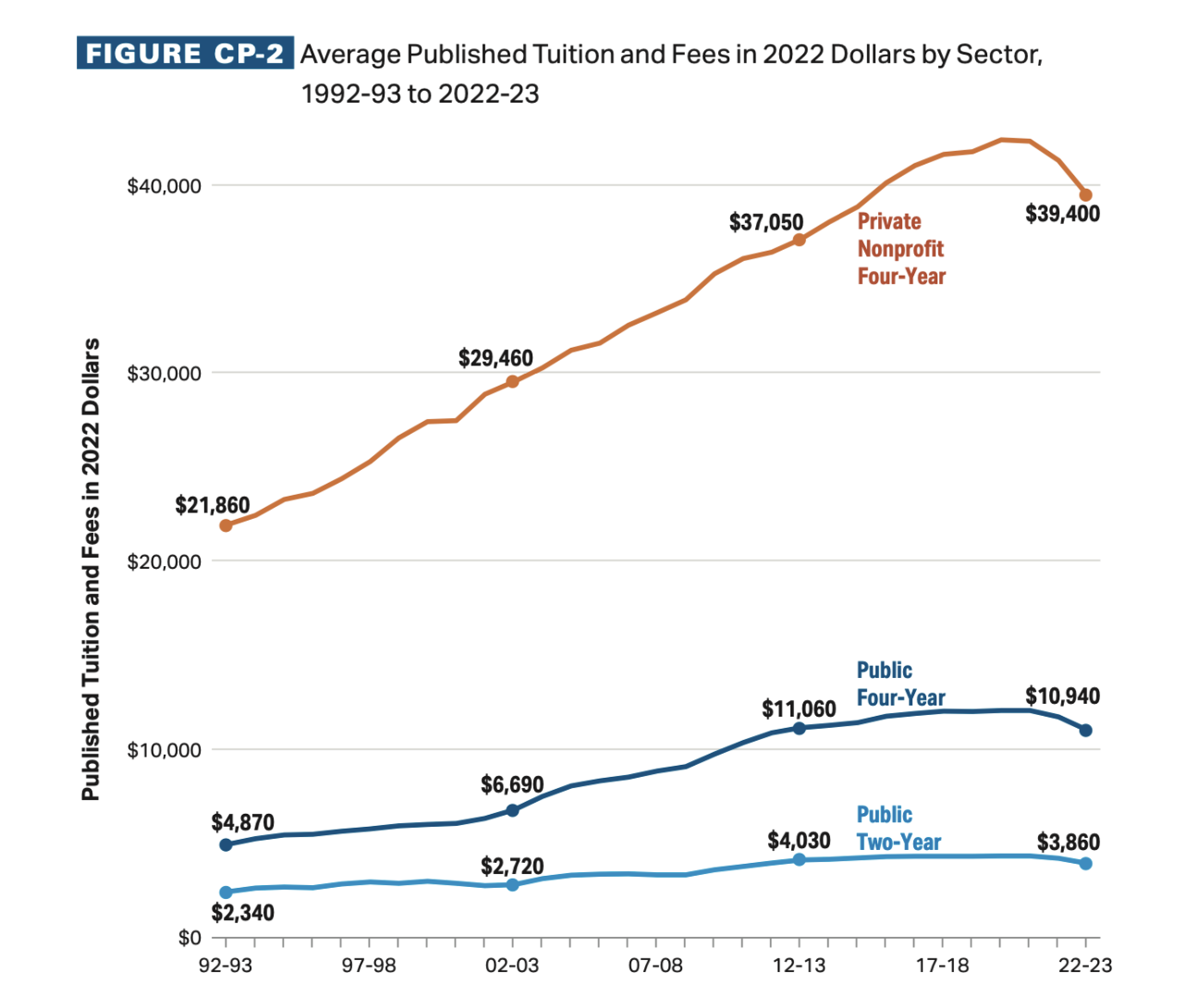By Dayna Smith
The rising cost of college is a well-known reality, with public universities now demanding an average of over $26,000 per year in tuition and fees alone. This amount doesn’t even include accommodation, meals, textbooks, and additional expenses. Determining the right amount to set aside for college is an ongoing debate for countless students and their families.
The answer hinges on several factors, including the institution, your state of residence, and your family’s financial circumstances. The good news is that there are things you can do today to help you prepare to set both you and your child up for the highest financial and academic success. Today let’s explore five steps to get you started.
1. Collect the Facts
Because college tuition gets more expensive every year, the rising numbers can cause anyone to break out in a sweat. The average sticker price for a private college for the 2022-23 school year was nearly $40,000.
The following table shows the average cost of tuition over the last 20 years:

Source: College Board, Trends in College Pricing and Student Aid 2022, Figure CP-2.
Even though the drastic hikes have recently tapered, if the upward trend continues, in 2040 a 4-year private college could cost nearly $100,000 per year. For college graduates, the average student loan debt is $37,000 and the average monthly student loan payment is $460. For students just beginning their careers, that’s a large bill to pay each month. The substantial costs may be overwhelming, but knowing what to expect gives you a goal to aim for.
2. Start Saving
It’s never too late or too early to start saving for your child’s college fund. By starting early, you can reap the rewards of compound interest. If you wait, your account balance may not be as high, but you are still investing something toward your child’s future.
Even if you don’t think you have enough room in your budget to add another line item, $25 a month is still $25 more than $0. Setting up automatic contributions is a good way to remind yourself that college is getting closer, and your monthly account statement will keep this goal at the forefront of your mind. You can also make it a goal to save extra money from a raise or a bonus and invest it in your child’s future.
3. Different Ways to Save
The most common method people use to save for college is through a 529 plan. A 529 plan is a state-sponsored education savings account that allows earnings to grow on a tax-deferred basis. There are two categories of 529 plans: prepaid tuition plans and college savings plans.
Prepaid plans let you pay future tuition costs at today’s prices, which, considering skyrocketing college costs, can be enticing. On the other hand, college savings plans have no age or income restrictions and allow you to save anywhere from $235,000 to $550,000 per child, and then use it, tax-free, for qualified education expenses. As an added benefit, you are not limited to using the plan offered by the state in which you live. Some states will give you a tax credit for using their plan, but, in many cases, it’s worth it to shop around.
Beyond 529 plans, some families use Roth IRAs. Your Roth contributions can be withdrawn at any time and can be used for any purpose. In addition, Roth IRAs offer virtually unlimited investment options. And, IRAs will not have any impact on your financial aid eligibility.
For college savings, Roth IRAs aren’t the perfect option, but they do offer an alternative to traditional 529 plans. Think about opening a 529 plan for college and also continuing to contribute to a Roth for retirement. This strategy gives you extra resources to draw on if you need them.
4. Diversify Your Savings
While some people are able to save and pay for the total cost of their children’s college educations, most people don’t fit into this category. Instead of letting that fact get you down, break the cost of college into thirds.
The first step is to save before your children head off to college. By starting early and having some help from the markets, you can accumulate a solid base to use for tuition and room and board. The next step is to plan on paying for about one-third of the costs while your child is in college. This can be through a combination of scholarships, grants, a part-time job for your child, or contributions from the family. The final piece is student loans that your child or you can repay after he or she has completed college. Since the goal would be to minimize student loans, try to maximize the first two parts of this three-pronged strategy first.
5. Check Your Progress
Just like your 401(k) plan, you need to monitor your college planning investments. In the early days of saving for college, you’ll want to be more aggressive with your investments, but as college draws closer, the investment allocation should become more conservative—just like a retirement account. Some 529 plans even offer age-based investment options that automatically become more conservative as your child gets older. It is also helpful to monitor your balances, keep an eye on the changing college costs, and track your progress toward your goal.
If the practice of setting money aside for your child’s college education feels overwhelming, Cedar Brook Group is here to lend a hand. We specialize in simplifying the various 529 plan choices and other strategies with the goal of optimizing the savings available for your child’s or grandchild’s college journey. Even if you’ve already established a 529 plan, it’s vital to enlist the guidance of a seasoned professional who can oversee your account’s investments as you stay on course toward your objectives.
Ready to explore the ways you can initiate your college savings journey? Reach out to us at 440-683-9213, flegan@cedarbrookfinancial.com, or schedule a complimentary introductory call online!







